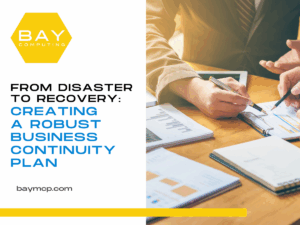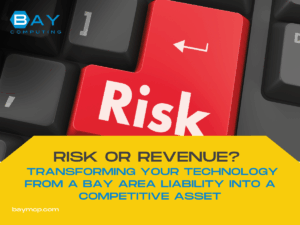IT Budgeting for the New Year: What to Prioritize for Value, Not Just Volume
The Budgeting Paradox: When Growth Creates Waste
For years, IT budgeting was a relatively predictable cycle built around large, infrequent Capital Expenditures (CapEx): the costly purchase of physical servers, infrastructure, and equipment, which were then depreciated over time on the balance sheet. Today, that model is obsolete. The vast majority of technology spending has migrated to the cloud, shifting costs into variable Operating Expenditures (OpEx). While OpEx allows for rapid, on-demand consumption and immediate tax deductibility, it introduces a new strategic challenge: massive financial unpredictability.
The data confirms this challenge is universal. Worldwide end-user spending on public cloud services is skyrocketing, forecasted to reach $723.4 billion in 2025, a stunning 21.5% increase from the prior year. Yet, the scale of this investment is matched by the scale of the waste: 84% of organizations report struggling to manage their cloud spend effectively. This struggle arises because technical freedom—the ability for engineering teams to rapidly deploy resources—has decoupled from financial accountability. Without a mechanism to continuously align usage with financial goals, consumption often grows unchecked, creating massive budgetary instability. To thrive in this new environment, organizations must stop budgeting solely for cost volume and start prioritizing investments that maximize business value through measurable governance.
To structure this shift, forward-looking IT leaders must immediately prioritize three foundational pillars in their new year budget, ensuring technology decisions are driven by tangible metrics rather than sheer necessity.
Pillar One: Cybersecurity for Loss Avoidance
The escalating threat landscape dictates that cybersecurity must move beyond being viewed as an insurance premium or a compliance checkbox; it is now a fundamental investment in operational resilience. Global end-user spending on information security is projected to increase by 12.5% in 2026, totaling $240 billion, driven by rising regulatory pressures and the expanded use of AI by threat actors.
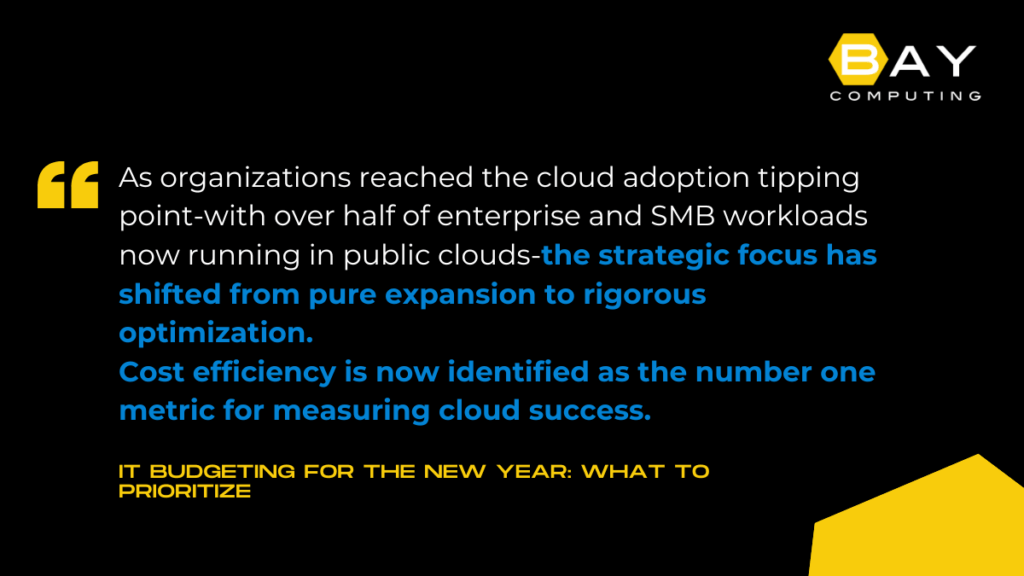
The fundamental shift required in budgeting here is moving from traditional Return on Investment (ROI) to Return on Security Investment (ROSI), a metric focused on loss avoided. When investing in areas like endpoint protection, identity and access management (IAM), and advanced threat detection, the justification must quantify the potential financial damage averted. Consider the measurable liabilities: a ransomware event averages 22 days of operational downtime, translating directly into lost revenue and reputation damage. By calculating the average revenue loss per hour or day, business leaders can quantify the precise value of preventative measures.
Additionally, the budget must treat compliance not as a burden but as a strategic lever. Integrating comprehensive frameworks, such as the NIST Cybersecurity Framework (which centers on the core functions of Identify, Protect, Detect, Respond, and Recover), accelerates overall security maturity. Funding for compliance requirements (like HIPAA or CMMC) thus serves a dual purpose: it ensures the necessary documentation for risk mitigation and simultaneously strengthens IT defenses. Seeking a partner who offers holistic, proactive cybersecurity and IT security solutions, including real-time threat response and ongoing audit-ready reporting, is a non-negotiable step to provide comprehensive coverage across endpoints, cloud, and applications.
Pillar Two: FinOps and Cloud Cost Accountability
As organizations reached the cloud adoption tipping point-with over half of enterprise and SMB workloads now running in public clouds-the strategic focus has shifted from pure expansion to rigorous optimization. Cost efficiency is now identified as the number one metric for measuring cloud success. The solution to the variable cost nightmare is the adoption of FinOps (Cloud Financial Operations), an operational framework that fosters continuous financial accountability through collaboration between engineering, finance, and business teams.
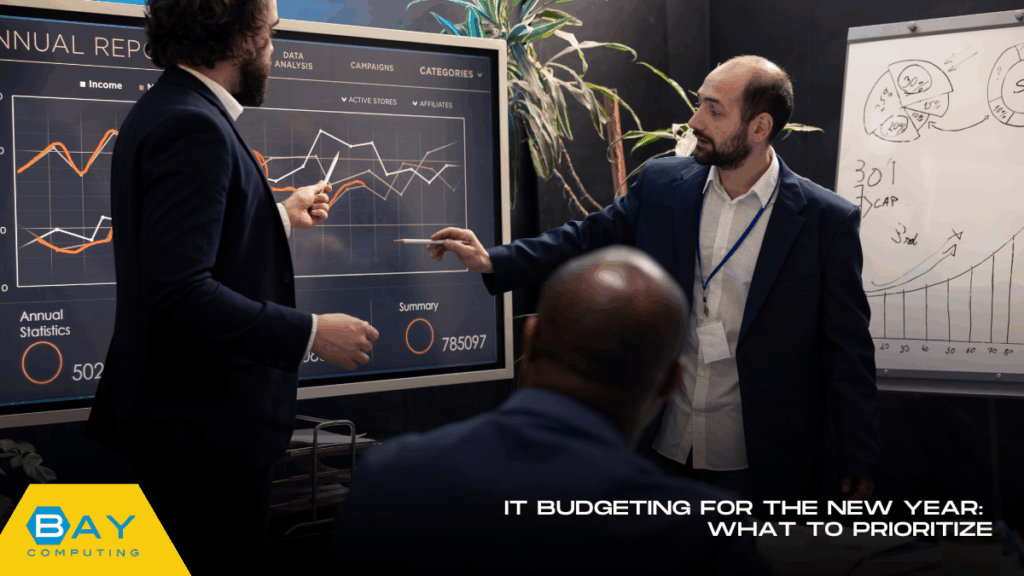
The core FinOps principles must guide the new budget: business value drives technology decisions, and every team must take ownership of its technology usage. Success hinges on ensuring accurate, timely, and accessible cost data (the Inform phase), enabling optimization efforts, and embedding those practices operationally (the Operate phase).
The strategic challenge lies in governance. While ownership should be decentralized to allow engineering agility, critical functions like rate optimization (handling reserved instance purchases and commitment contracts) must be managed centrally. This preserves economies of scale, freeing engineers to focus purely on usage optimization within their environments. Furthermore, FinOps is expanding beyond just public cloud (the “Cloud+” approach) to govern intersecting technology costs across the enterprise. This integration is crucial, as Gartner forecasts that by 2026, organizations aligning FinOps with Software Asset Management (SAM) will report 60% less financial waste. Leaders aiming to institutionalize this cultural and operational change should consult the guidance provided by the FinOps Foundation Framework to establish financial accountability.
The distinction between the past and the future of IT funding can be summarized below:
Strategic IT Investment: CapEx vs. FinOps OpEx
| Factor | Traditional CapEx Model | Modern FinOps OpEx Model |
| Investment Type | Fixed Assets (Servers, Hardware) | Variable Services (Cloud Consumption) |
| Financial Goal | Lower Total Cost of Ownership (TCO) | Maximize Business Value per Unit |
| Accounting | Capitalized & Depreciated Over Years | Expensed Immediately (High Deductibility) |
| Decision Focus | Acquisition Cost & Fixed Planning | Continuous Optimization & Usage Control |
Pillar Three: Strategic Migration and Application Retirement
Before any significant budget is allocated to large-scale migration or modernization, the third priority must be the rigorous assessment of the existing technology portfolio. Cloud transformation success requires a comprehensive Migration Readiness Assessment (MRA), a process designed to identify and close gaps across key operational areas (business, people, governance, platform, security, and operations) before the actual migration begins. Frameworks such as the Cloud Adoption Framework are essential to ensuring this holistic review and detailed workload prioritization.
The most overlooked, yet immediately lucrative, strategy in this phase is “Retire.” Of the common migration strategies (the “Rs,” including Rehost, Replatform, and Rearchitect), retirement offers the quickest financial return. The budget must include funds dedicated to the discovery and decommissioning of applications that provide zero or minimal business value.
Prioritizing the retirement of “zombie” applications (those with an average CPU or memory usage below 5%) immediately eliminates associated hosting, maintenance, and security costs. This process of immediate cost avoidance effectively generates internal capital, allowing the savings recovered from the retired applications to be re-allocated directly into more expensive, strategic projects like replatforming or modernization. This approach reframes migration from an unavoidable organizational cost to a self-funding, continuous efficiency process. For organizations seeking to define their ideal cloud path and manage secure, cost-effective transitions, expert partnership is invaluable.
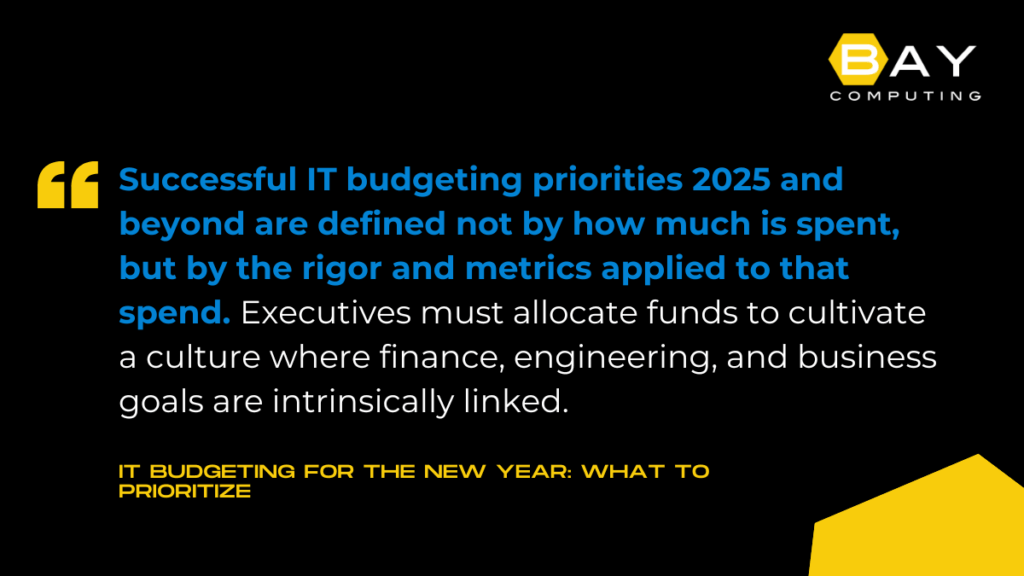
Strategic Conclusions: Your IT Budgeting Prioritization Checklist
Successful IT budgeting priorities 2025 and beyond are defined not by how much is spent, but by the rigor and metrics applied to that spend. Executives must allocate funds to cultivate a culture where finance, engineering, and business goals are intrinsically linked. This requires not only investing in the pillars defined above but also preparing the workforce for the inevitable influence of AI through dedicated funds for AI literacy and workforce enablement.
For immediate action, leaders should reference this three-point checklist to guide their budgetary reviews and ensure every dollar aligns with a measurable business outcome.
Strategic IT Budget Prioritization Checklist
| Priority Pillar | Core Investment Focus | Key Metric for Success | Strategic Outcome |
| Cybersecurity | Zero Trust, AI Detection, Compliance | Return on Security Investment (ROSI) | Quantified Risk Mitigation (Loss Avoided) |
| Cloud Financial Ops | FinOps Culture, Visibility, ITAM Integration | Unit Economics & Cost Efficiency | Maximized Business Value from Cloud Spend |
| Platform Migration | Readiness Assessment (MRA), Application Retirement | Retirement Rate of “Zombie” Apps” | Self-Funding Modernization and Efficiency |

By adopting these sophisticated financial strategies, IT leaders can move beyond simply keeping the lights on and become strategic partners driving profitable growth. For businesses navigating complex cloud migration solutions Massachusetts and beyond, the path to financial resilience begins with data-driven strategic planning, informed by current market realities detailed in authoritative sources like the Flexera 2025 State of the Cloud Report.
Ready to shift your budget from unpredictable expense to strategic growth? Contact Bay Computing today to schedule a strategic IT Budgeting and FinOps consultation. We guide businesses across the US, providing tailored cloud migration solutions throughout the Greater Boston, MA area and nationwide, ensuring your new year budget delivers maximum value.



